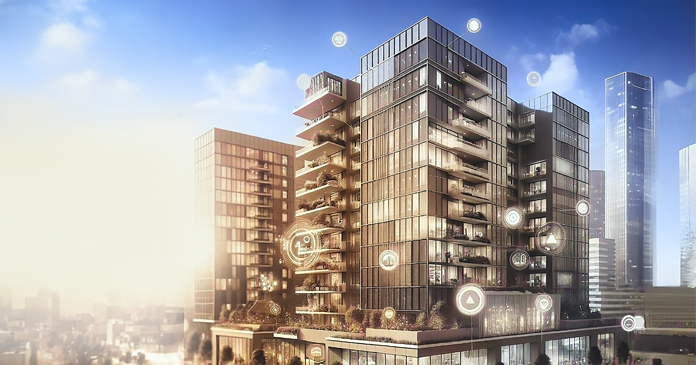
With mortgage interest rates on the verge of 8 percent—a 23-year high—and a looming recession on the horizon, home purchasing power is down and multifamily housing remains in high demand with just a 6.6 percent vacancy rate as of Q3 2023.
But sky-high inflation and a potential economic downturn can also make investors a bit tentative about new prospects. Fortunately, there’s encouraging news.
“I think multifamily housing is absolutely where you want to be as an investor,” says Al Brooks, head of commercial real estate for JPMorgan Chase. “The multifamily rental market may still feel the impact of a recession, but the effects could be mild depending on the downturn’s severity.”
With Moody’s Analytics predicting downside scenarios that nudge vacancies up just fractions of a percent, “multifamily is in a much better spot to weather any downturn compared to property types like office and retail,” according to Moody’s Head of Commercial Real Estate economics Victor Calanog.
Even so, the unsettled economic conditions now more than ever make it imperative for investors to reduce costs while still offering attractive amenities that maximize net operating income (NOI), occupancy and property valuation.
But as tenants’ demands for functional housing amenities shift toward convenience and connectivity, many properties and their investors are leaving money on the table.
Here are three ways to offer the amenities, lifestyle and smart living solutions that command a premium and increase NOI:
Convenient connectivity, managed wifi
Deploying managed wifi service throughout a property creates a new revenue stream, attracts new tenants, and helps to retain existing ones.
The typical internet service model involves properties signing 10–25-year deals with a local cable provider who pays an up-front fee for the privilege to wire the entire complex and be the exclusive service provider.
But this leaves tenants on their own to set up individual service with the company, which can be quite inconvenient—not only because of the logistics in setting up the account, but also the hassle placed on the resident of waiting for installation or service. It’s also not very beneficial for the property. Aside from the up-front fee and a nominal annual fee per door, there’s very little ongoing revenue generated for the property. Not to mention, in a competitive market, this complex set up can make a property less attractive compared to others that include wifi service.
That’s why demand for managed wifi has grown significantly: because it eliminates a major hassle for tenants and provides property-wide secure coverage beyond their individual unit, allowing them to use the pool, fitness facility and other common areas without losing their connection.
But it also offers an ongoing revenue stream for the property and investors. For example, charging residents just $99/month for wifi (either separately or bundled with their rent) at a 300-unit property would generate over $365,000 in additional annual revenue.
Savings and sustainability with smart energy solutions
Utility costs are a major operational expense for multifamily housing, especially when utilities are included in the cost of the rent.
There’s no incentive for residents to be mindful of their consumption by turning off unnecessary lights, ensuring windows and doors are kept shut and reporting issues like dripping faucets or toilet leaks that don’t cause damage. That uncontrolled and unknown cost reduces NOI.
Smart energy solutions have proven to reduce energy consumption and cost in residential settings by about 8 percent, and building owners can leverage managed wifi to support their deployment.
For example, installing smart thermostats that can be programmed for optimal temperature based on time of day or occupancy status can reduce both heating and cooling costs. Building owners can control the temperature in common areas to reduce usage substantially, especially during unoccupied hours, while still giving residents control within their own units.
Similarly, smart shades that open and close based on seasonal and sunlight conditions have been shown to cut electricity bills by nearly 15 percent in residential settings. And smart water flow sensors can help properties spot pesky leaks—those little drips for which the cost can quickly add up when multiplied over weeks or months and hundreds of units.
In addition to the cost savings, these eco-friendly amenities can also attract environmentally-minded tenants who prioritize sustainability. With growing concerns over climate change, young people are especially keen on reducing their environmental impact, and offering a greener living environment can be a competitive differentiator that helps drive up rentals, renewals, revenue and NOI.
Sense of community with mixed use
Mixed use properties that include both residential and commercial space are also in higher demand and provide an additional opportunity to grow revenue and occupancy.
Adding a coffee shop, restaurants, retail shops or even office space provides tenants with both convenience and a sense of community that supports their busy lifestyles.
Offering on-site childcare could be a huge draw for families, especially those who work remotely from home. The convenience of a daycare located just steps away is extremely valuable for working parents.
Investing in mixed use has the obvious benefit of driving new revenue and increasing NOI through commercial leasing agreements, but it can also help attract and retain tenants, who are willing to pay a premium for the amenities.
It’s worth noting that investing in a managed wifi deployment can also support mixed use. Businesses will certainly need connectivity for their communications and point-of-sale systems, and having secure, configurable bandwidth built-in to support their needs eliminates the hassle of ISP contracts for commercial tenants.
As economic uncertainty persists, multifamily housing investors need more assurance than ever that planned or existing properties can generate sustainable revenue and maximum NOI.
By investing in amenities that provide the connectivity, sustainability and convenience tenants demand, investors can look forward to higher property valuation and lower CAP rates.















